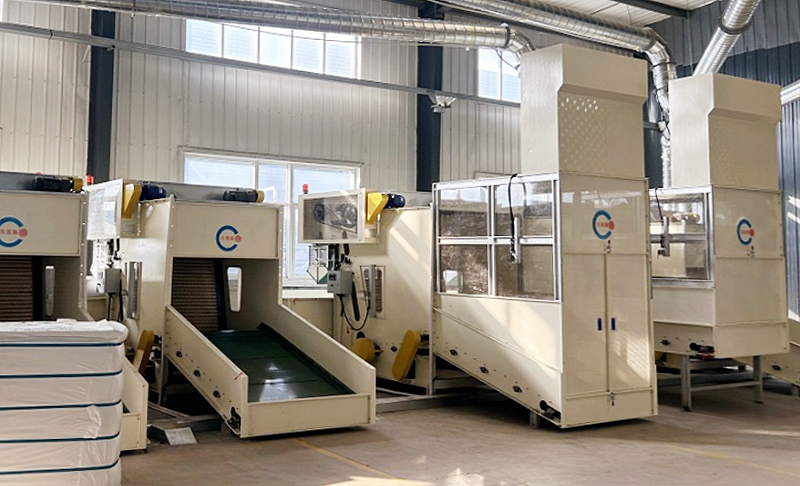
| BALE OPENER | ||||
| TYPE | SPECIFICATION | NOTE | ||
| CYLKB-1300 | working width | 1300mm | weighing and loosing | |
| power | 3.75kw | |||
| output | 200kg/h | |||
| roll diameter | 350mm | |||
What is it and what does it do?
Imagine you have a big, tightly packed block of cotton (or other fibers) like the ones used in the textile industry. This block is called a “bale.” A bale opener is like a giant, automated “fluffer” for these bales.
Its main job is to take these dense, hard bales of fiber and loosen them up, separating the fibers from each other and turning them into a light, fluffy mass. Think of it like how you’d pull apart cotton balls to make them less compact.
How is it done?
Bale openers use a combination of techniques to achieve this:
- Feeding: The machine has a conveyor belt or other system to feed the tightly packed bale into the machine.
- Opening: Inside, there are usually rotating cylinders or rollers covered with teeth or pins. These rough surfaces grab chunks of fiber from the bale and start to tear them apart.
- Cleaning (sometimes): Some bale openers also have built-in cleaning mechanisms to remove dirt, dust, and other impurities from the fibers as they’re being opened.
- Output: The loosened fibers are then discharged from the machine, often onto another conveyor belt or into a storage container, ready for the next step in the textile process.
Use in the Non-Woven Sector
Non-woven fabrics are materials like dryer sheets, surgical masks, and the inside of disposable diapers. They’re made by bonding fibers together, rather than weaving them like traditional cloth.
Bale openers are essential in non-woven manufacturing because:
- Raw Material Prep: They prepare the raw fibers (cotton, synthetic fibers, etc.) by opening and loosening them, making them suitable for further processing.
- Blending: They can help in blending different types of fibers to achieve desired properties in the final non-woven product.
- Consistent Feed: They provide a consistent and even flow of opened fibers to the next machines in the production line, which is crucial for making uniform non-woven fabrics.
Think of it this way:
Imagine making a cotton candy. You start with a small amount of hard sugar crystals. The machine (like a simplified bale opener) whips those crystals around, melting and turning them into fine, fluffy strands of cotton candy. The bale opener does something similar with the fibers, just on a much larger and more automated scale.
In short, the bale opener is a crucial first step in taking raw, compacted fibers and turning them into a usable, fluffy form for making non-woven products. It’s the “starting point” for many non-woven manufacturing processes.
